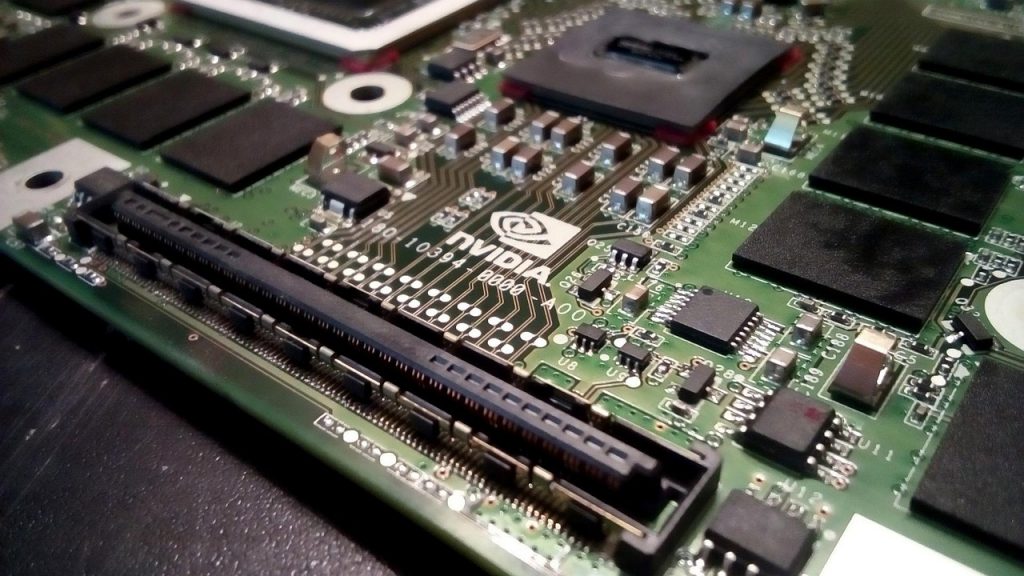Nvidia (NASDAQ:NVDA) indicated that it received assurances from the Trump administration allowing it to resume sales of its H20 artificial-intelligence chip to China after facing a ban around April. This comes just a few days after Nvidia’s CEO Jensen Huang met with President Donald Trump. The move marks a notable win for Nvidia, which had been impacted by stringent U.S. export controls aimed at restricting China’s access to advanced AI technology. The H20 chip, specifically designed to comply with U.S. regulations on chip exports, is less powerful than Nvidia’s flagship offerings but has remained in high demand among Chinese customers. Separately, can oil help bring peace? See Trump’s Russia Math, Simplified.
Nvidia took a $4.5 billion write-off in its latest quarter on unsold H20 chips that it was unable to repurpose for other markets. If sales of these high-volume chips to China resume, a reversal of this write-off could boost earnings. Nvidia stock has been a strong performer this year, rising by close to 18% to about $170 per share. Now could the easing of U.S.-China tech tensions drive the next leg of Nvidia’s rally toward the $200 mark? (related:What’s Happening With XRP Price?)

Image by Jacek Abramowicz from Pixabay
Why China Is Important For Nvidia
China is a massive and rapidly growing AI market, home to tech giants such as Baidu and Alibaba, as well as upstarts like DeepSeek, that are increasingly rivaling the U.S. in AI software development. However, China still lags significantly in AI hardware, with domestic AI chips from companies such as Huawei falling short of the performance offered by Nvidia’s cutting-edge GPUs. This creates a deep reliance on Nvidia’s technology to power China’s AI ambitions.
At the same time, China is a critical market for Nvidia. The country generated $17 billion in revenue for the company in the fiscal year ending January 2025, roughly 13% of Nvidia’s total revenue. And that number may understate the full picture. Many Chinese tech companies have reportedly used gray market resellers and overseas intermediaries in countries like Singapore, Malaysia, Taiwan, and Vietnam to work around U.S. export restrictions and obtain Nvidia’s top-end chips. These practices have resulted in governments bolstering enforcement efforts and crackdowns. If the tech trade stand-off thaws, the resumption of direct sales could replace some of this shadow demand, giving Nvidia a clearer and more scalable path to growth in China.
Nvidia’s is focusing on balancing catering to this Chinese demand and complying with U.S. regulations. The company also said that it developed a new AI chip for China, geared toward factory automation and logistics applications. The chip is based on Nvidia’s most advanced Blackwell architecture but is downgraded in some features to address the U.S. government’s concerns about sending the latest cutting edge tech to China.
Can This Take Nvidia Stock To $200?
While Nvidia stock has momentum on its side, we think the stock is already a bit richly valued. We value Nvidia stock at about $130 per share, roughly 20% below the current market price. See our analysis of Nvidia valuation: Expensive or Cheap for more details. Sure, Nvidia trades at about 40x forward earnings, which is reasonable given the company is poised to grow revenues by 55% per consensus estimates. However, there are some reasons to be cautious. While Nvidia remains the gold standard for AI, the “fear-of-missing-out” driven rally that has fueled the stock over the last two years may begin to lose steam.
Over the past three years, Big Tech has poured money into training ever-larger AI models, significantly boosting demand for Nvidia’s high-performance chips. However, incremental performance gains from larger AI models could begin to plateau, and the availability of high-quality training data may also become a bottleneck. Moreover, the AI landscape could start to shift from training to inference, where efficiency and cost matter more than raw power. In this phase, AMD’s MI series and open-source models could become more competitive. AMD’s ROCm software platform, while not as advanced as Nvidia’s CUDA, is likely good enough for many inference tasks. This potential shift in AI workloads, combined with the risk of growth normalization, could weigh on demand for Nvidia’s most powerful and expensive GPUs, and potentially slow the pace of its earnings expansion going forward.
Concerned about the downside risk for NVDA stock? The Trefis High Quality (HQ) Portfolio, with a collection of 30 stocks, has a track record of comfortably outperforming the S&P 500 over the last 4-year period. Why is that? As a group, HQ Portfolio stocks provided better returns with less risk versus the benchmark index; less of a roller-coaster ride, as evident in HQ Portfolio performance metrics
Invest with Trefis Market-Beating Portfolios
See all Trefis Price Estimates